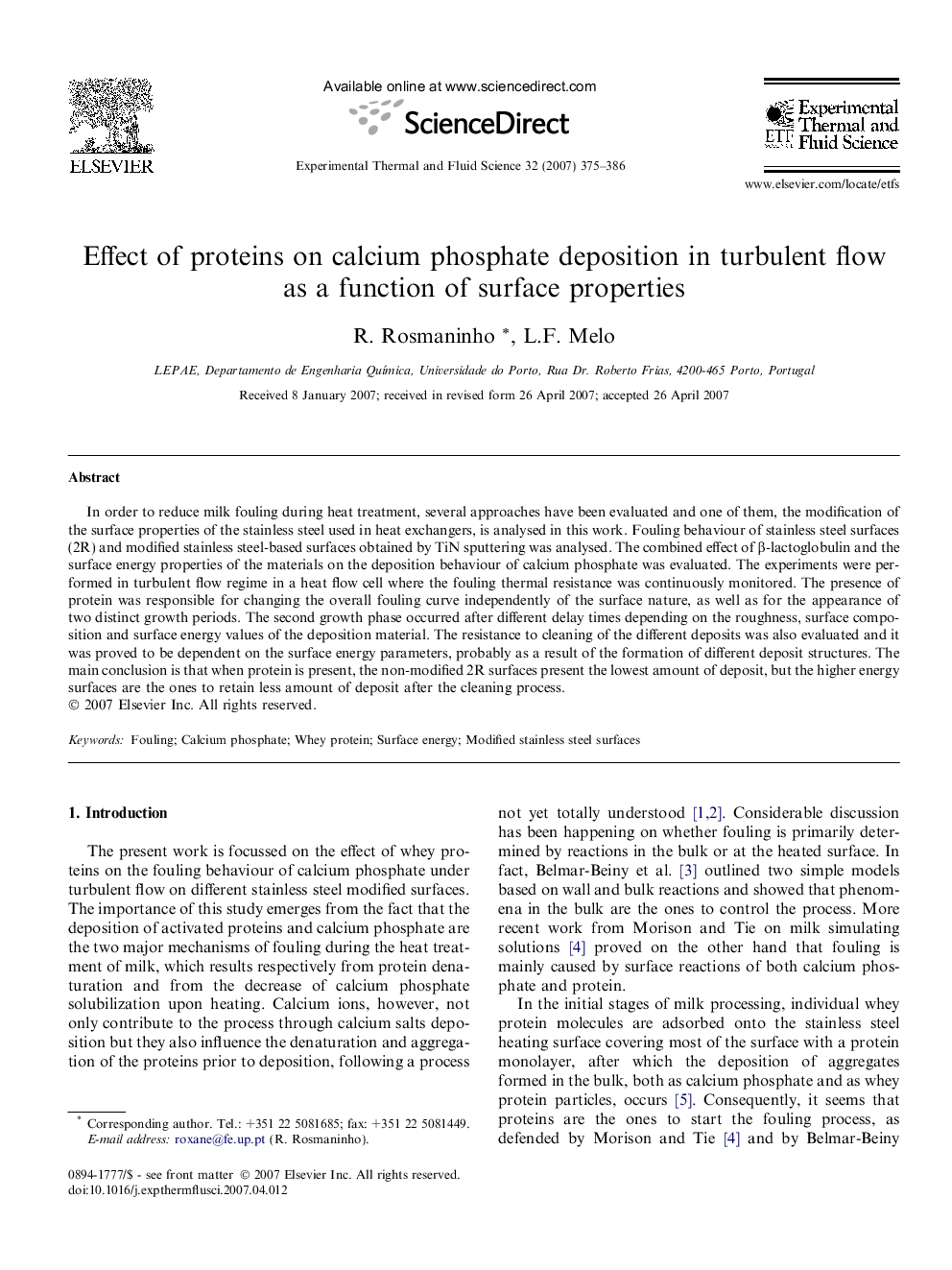| Article ID | Journal | Published Year | Pages | File Type |
|---|---|---|---|---|
| 652388 | Experimental Thermal and Fluid Science | 2007 | 12 Pages |
In order to reduce milk fouling during heat treatment, several approaches have been evaluated and one of them, the modification of the surface properties of the stainless steel used in heat exchangers, is analysed in this work. Fouling behaviour of stainless steel surfaces (2R) and modified stainless steel-based surfaces obtained by TiN sputtering was analysed. The combined effect of β-lactoglobulin and the surface energy properties of the materials on the deposition behaviour of calcium phosphate was evaluated. The experiments were performed in turbulent flow regime in a heat flow cell where the fouling thermal resistance was continuously monitored. The presence of protein was responsible for changing the overall fouling curve independently of the surface nature, as well as for the appearance of two distinct growth periods. The second growth phase occurred after different delay times depending on the roughness, surface composition and surface energy values of the deposition material. The resistance to cleaning of the different deposits was also evaluated and it was proved to be dependent on the surface energy parameters, probably as a result of the formation of different deposit structures. The main conclusion is that when protein is present, the non-modified 2R surfaces present the lowest amount of deposit, but the higher energy surfaces are the ones to retain less amount of deposit after the cleaning process.
